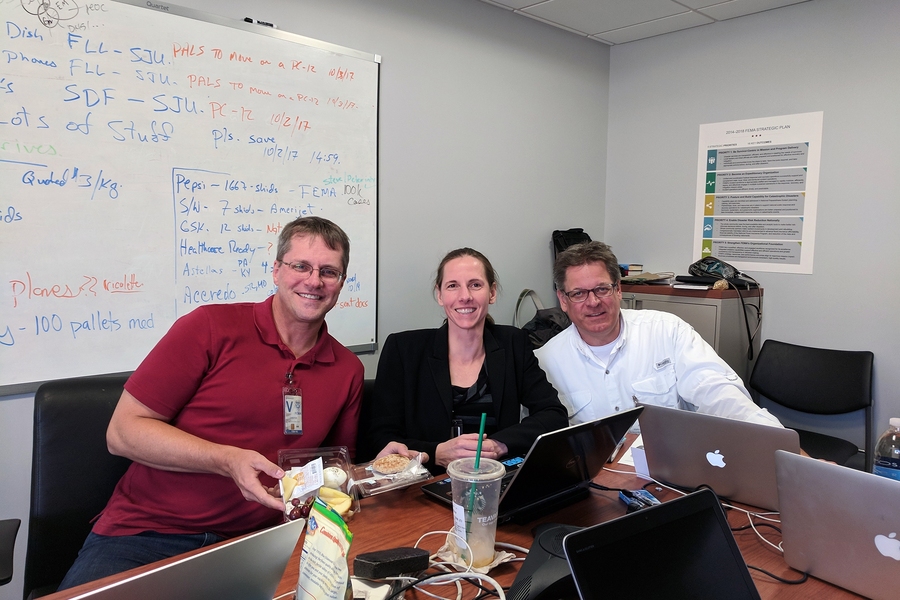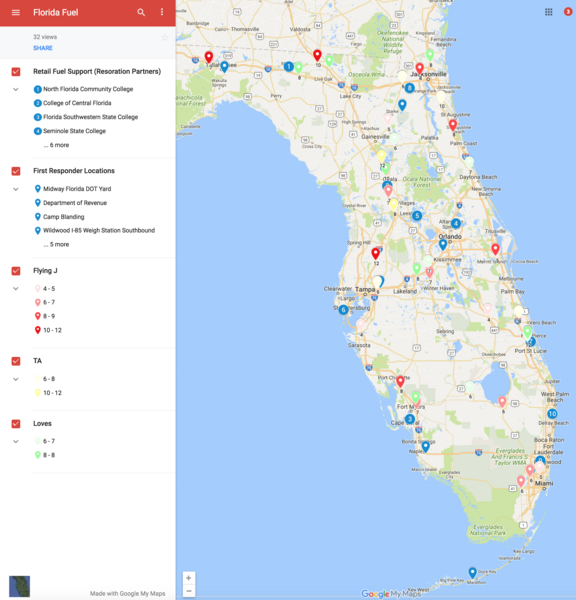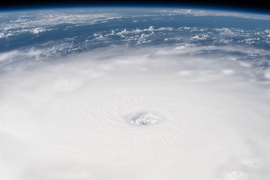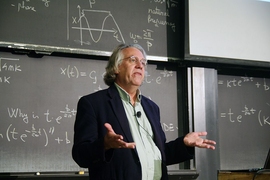As Hurricane Irma and Hurricane Maria approached the Caribbean late this summer, public and private supply chains already affected and stretched thin by August's Hurricane Harvey had to ramp up again. Coordination was even more critical in order to leverage all available logistics capacity to meet human needs.
MIT’s Humanitarian Response Lab joined the effort, operating from the Federal Emergency Management Agency (FEMA) headquarters in Washington to support supply chain decision-making across public and private sectors.
Based within the Center for Transportation and Logistics (CTL), the Humanitarian Response Lab works to improve the supply chain systems behind public services and private markets to improve crisis response. As Hurricane Irma strengthened in the Atlantic, lab members drew from the network of CTL alumni and over 50 Supply Chain Exchange corporate partners to gather intelligence on post-Harvey private sector capabilities.
The day before Irma made landfall, Jarrod Goentzel, director of the MIT Humanitarian Response Lab, arrived at FEMA headquarters and began working closely with the National Business Emergency Operations Center (NBEOC) and the Logistics Management Directorate to help restore the supply of goods into areas that were affected by the storm.
“Our lab has been a member of the NBEOC since 2014 and has actively engaged MIT students with the FEMA logistics team on projects in recent years,” Goentzel says. “We saw an opportunity to accelerate the exchange of operational information between FEMA and companies in the MIT network during this emergency.”
Tim Russell, a research scientist in the lab, soon joined to help gather, analyze, and share information critical to getting supplies moving after the storm, including road conditions and closures, access into affected locations, and fuel supply. Close proximity with the multiagency team providing situational awareness in the National Response Coordination Center (NRCC) enabled faster access to information that helps companies accelerate their efforts to resume business operations.
In return, information about private sector capabilities and constraints helped FEMA leaders work with local authorities to prioritize efforts that support businesses and that provide supplies directly where needed. The MIT team analyzed supply chain data from companies working to make critical commodities such as water, food, and fuel accessible soon after the storm passed. To assist with situational awareness, the team mapped key retailers and distribution centers in the state of Florida.
“We continually strive to better support the private sector in unleashing its extensive supply chain capacity during emergencies,” says Jeffery Dorko, assistant administrator for logistics at FEMA. “During Irma and Maria, the MIT team enabled exchange of critical information with operational teams in companies that provide essential goods. We look to build on this approach moving forward.”
Fuel for transportation and generators is always critical following a disaster, but it was especially important for shippers sending trucks with goods into southern Florida because they needed diesel for the return trip. As a result, the team focused on assurance of fuel supply, specifically targeting companies running the large chains of highway travel centers. Information from retailers helped shape FEMA’s support for the State of Florida’s request to assure fuel supply for first responders and power restoration teams.
Not long after Irma swept through the Carribbean and southeast United States, Hurricane Maria wrought further havoc in the Carribbean, leaving millions without power, without water, and without homes. This time Michael Windle, a research associate in the lab, returned with Goentzel to FEMA headquarters and established new connections with companies serving the island communities.
The MIT team, together with non-profit logistics providers American Logistics Aid Network and LIFT, initiated a daily private sector supply chain coordination call for Hurricane Maria. Representatives from FEMA and the Government of Puerto Rico are also participating. The call, which currently continues three times per week, serves as a forum for business collaboration, information and resource sharing, and problem identification and resolution amidst the severly damaged Puerto Rican infrastructure.
One result of the calls was a coordinated air bridge to the San Juan, Puerto Rico airport, with the first shipment including essential communications equipment for AT&T mobile networks. Kathy Fulton, the executive director of ALAN, likens the air bridge to a rideshare service.
“To aid companies providing critical commodities to Puerto Rico after the hurricane, a system was set up to consolidate cargo at specific airports and terminals, for example in Miami, where a chartered flight would depart for San Juan,” Fulton says. “And if we could identify flights that had excess space or additional weight capacity, we would coordinate with FEMA, companies, and nonprofits to utilize that space.”
In support of the NRCC, members of the Humanitarian Response Lab also worked with FEMA’s Fuel Crisis Action Planning Team. Michael Windle says that, in addition to transportation, fuel was critical in providing temporary power in Puerto Rico.
“Critical facilities such as hospitals and ports received fuel support directly from the government to immediately power on-site generators,” he says. “Given the extensive damage to Puerto Rico’s electric grid, manufacturers and retailers would likely rely on their own generators for weeks and months. Our team developed data collection tools and helped structure the analysis of fuel distribution and maintenance requirements to keep these private sector generators running.”
Looking forward, the Humanitarian Response Lab seeks to leverage the experience in structuring a deeper operational dialogue across public and private sector supply chains during emergencies. In early December, CTL is hosting an event for its partner companies and invited guests to share experiences, develop insights, and explore how better information sharing and resource coordination can accelerate the restoration of business operations that serve disaster-affected populations.









